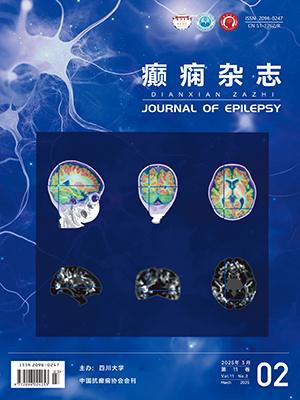| 1. |
Proposal for revised classification of epilepsies and epileptic syndromes. Commission on Classification and Terminology of the International League Against Epilepsy. Epilepsia, 1989, 30(4): 389-399.
|
| 2. |
Camfield P, Camfield C. Epileptic syndromes in childhood: clinical features, outcomes, and treatment. Epilepsia, 2002, 43(Suppl 3): 27-32.
|
| 3. |
Blom S, Heijbel J. Benign epilepsy of children with centrotemporal EEG foci: a follow-up study in adulthood of patients initially studied as children. Epilepsia, 1982, 23(6): 629-632.
|
| 4. |
Datta AN, Oser N, Bauder F, et al. Cognitive impairment and cortical reorganization in children with benign epilepsy with centrotemporal spikes. Epilepsia, 2013, 54(3): 487-494.
|
| 5. |
Verrotti A, Filippini M, Matricardi S, et al. Memory impairment and Benign Epilepsy with centrotemporal spike (BECTS): a growing suspicion. Brain Cogn, 2014, 84(1): 123-131.
|
| 6. |
Vannest J, Tenney JR, Gelineau-Morel R, et al. Cognitive and behavioral outcomes in benign childhood epilepsy with centrotemporal spikes. Epilepsy Behav, 2015, 45: 85-91.
|
| 7. |
Gobbi G, Boni A, Filippini M. The spectrum of idiopathic Rolandic epilepsy syndromes and idiopathic occipital epilepsies: from the benign to the disabling. Epilepsia, 2006, 47(Suppl 2): 62-66.
|
| 8. |
Engel JJ. A proposed diagnostic scheme for people with epileptic seizures and with epilepsy: report of the ILAE Task Force on Classification and Terminology. Epilepsia, 2001, 42(6): 796-803.
|
| 9. |
Overvliet GM, Aldenkamp AP, Klinkenberg S, et al. Impaired language performance as a precursor or consequence of Rolandic epilepsy? J Neurol Sci, 2011, 304(1-2): 71-74.
|
| 10. |
Neri ML, Guimaraes CA, Oliveira EP, et al. Neuropsychological assessment of children with rolandic epilepsy: executive functions. Epilepsy Behav, 2012, 24(4): 403-407.
|
| 11. |
Deltour L, Quaglino V, Barathon M, et al. Clinical evaluation of attentional processes in children with benign childhood epilepsy with centrotemporal spikes (BCECTS). Epileptic Disord, 2007, 9(4): 424-431.
|
| 12. |
Tang YL, Ji GJ, Yu Y, et al. Altered regional homogeneity in rolandic epilepsy: a resting-state FMRI study. Biomed Res Int, 2014, 2014: 960395.
|
| 13. |
Kanemura H, Hata S, Aoyagi K, et al. Serial changes of prefrontal lobe growth in the patients with benign childhood epilepsy with centrotemporal spikes presenting with cognitive impairments/behavioral problems. Brain Dev, 2011, 33(2): 106-113.
|
| 14. |
Lin JJ, Riley JD, Hsu DA, et al. Striatal hypertrophy and its cognitive effects in new-onset benign epilepsy with centrotemporal spikes. Epilepsia, 2012, 53(4): 677-685.
|
| 15. |
Friston K. Beyond phrenology: what can neuroimaging tell us about distributed circuitry? Annu Rev Neurosci, 2002, 25: 221-250.
|
| 16. |
McIntosh AR. Towards a network theory of cognition. Neural Netw, 2000, 13(8-9): 861-870.
|
| 17. |
Oser N, Hubacher M, Specht K, et al. Default mode network alterations during language task performance in children with benign epilepsy with centrotemporal spikes (BECTS). Epilepsy Behav, 2014, 33: 12-17.
|
| 18. |
Zeng H, Ramos CG, Nair VA, et al. Regional homogeneity (ReHo) changes in new onset versus chronic benign epilepsy of childhood with centrotemporal spikes (BECTS): A resting state fMRI study. Epilepsy Res, 2015, 116: 79-85.
|




